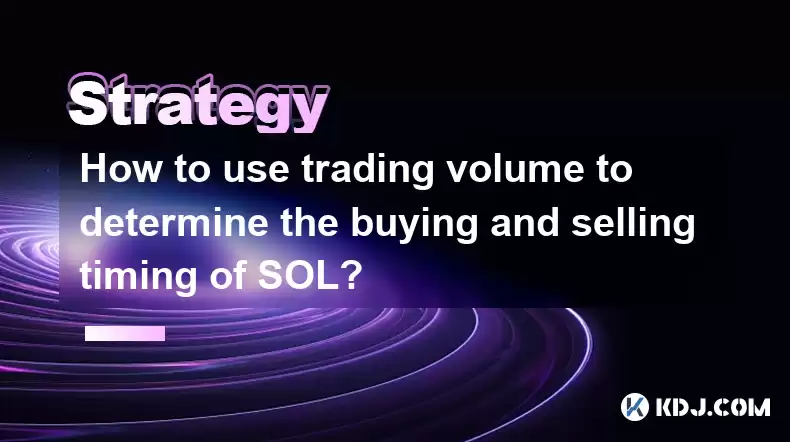-
 Bitcoin
Bitcoin $114500
-0.31% -
 Ethereum
Ethereum $3648
1.11% -
 XRP
XRP $3.033
-0.27% -
 Tether USDt
Tether USDt $0.9999
-0.01% -
 BNB
BNB $758.5
-0.32% -
 Solana
Solana $167.5
1.48% -
 USDC
USDC $0.9998
-0.02% -
 TRON
TRON $0.3331
0.74% -
 Dogecoin
Dogecoin $0.2039
0.25% -
 Cardano
Cardano $0.7419
-0.46% -
 Hyperliquid
Hyperliquid $39.21
2.66% -
 Stellar
Stellar $0.4049
-1.95% -
 Sui
Sui $3.483
-0.56% -
 Bitcoin Cash
Bitcoin Cash $570.8
2.89% -
 Chainlink
Chainlink $16.67
-0.57% -
 Hedera
Hedera $0.2470
-1.57% -
 Ethena USDe
Ethena USDe $1.001
0.00% -
 Avalanche
Avalanche $22.36
1.52% -
 Litecoin
Litecoin $123.4
4.35% -
 UNUS SED LEO
UNUS SED LEO $8.989
0.09% -
 Toncoin
Toncoin $3.324
-2.40% -
 Shiba Inu
Shiba Inu $0.00001219
-1.30% -
 Uniswap
Uniswap $9.811
2.54% -
 Polkadot
Polkadot $3.662
-0.07% -
 Monero
Monero $295.5
-3.85% -
 Dai
Dai $1.000
0.01% -
 Bitget Token
Bitget Token $4.345
0.24% -
 Cronos
Cronos $0.1380
0.95% -
 Pepe
Pepe $0.00001044
-1.14% -
 Ethena
Ethena $0.5981
-4.24%
How to use trading volume to determine the buying and selling timing of SOL?
Use trading volume to time SOL buys and sells: buy during volume spikes and sustained price rises, sell when volume declines post-highs. Combine with RSI, VWAP for best results.
Apr 22, 2025 at 05:42 pm

Trading volume is a crucial indicator that traders use to gauge the strength of a price movement in the cryptocurrency market, including Solana (SOL). By analyzing the trading volume, traders can make more informed decisions about when to buy or sell SOL. This article will explore how to use trading volume to determine the optimal timing for buying and selling SOL, providing a detailed guide for traders.
Understanding Trading Volume
Trading volume refers to the total number of SOL tokens that are traded within a specified period. It is a measure of the activity and liquidity of the SOL market. High trading volume indicates strong interest in SOL, whereas low trading volume suggests less interest or market inactivity.
To analyze trading volume effectively, traders need to look at both the absolute volume and the relative volume compared to historical data. Absolute volume is the raw number of SOL tokens traded, while relative volume compares current volume to average volume over a specific period.
Identifying Buying Opportunities
When looking for buying opportunities, traders should focus on periods where the trading volume increases significantly. A surge in trading volume can indicate growing interest and potential upward momentum in the price of SOL.
- Monitor volume spikes: Look for sudden increases in trading volume, especially when accompanied by a price increase. This could signal the start of a bullish trend.
- Confirm with price action: Ensure that the volume spike is followed by a sustained increase in price. If the price continues to rise after the volume surge, it may be a good time to buy.
- Use volume indicators: Tools like the Volume Weighted Average Price (VWAP) and the On-Balance Volume (OBV) can help confirm buying signals. VWAP calculates the average price of SOL weighted by volume, while OBV measures buying and selling pressure by adding or subtracting volume based on price movement.
Determining Selling Timing
Conversely, traders should use trading volume to identify the best times to sell SOL. A decrease in trading volume after a period of high volume and price increase can signal that the bullish trend is losing steam.
- Watch for volume decline: After a period of high volume and price increase, a decline in volume can indicate that the buying momentum is fading. This might be a good time to consider selling.
- Look for distribution patterns: If the price of SOL is increasing but the volume is decreasing, it may suggest that the market is distributing (selling) at the top. This is often a sign to sell.
- Use volume indicators for confirmation: Similar to buying, use VWAP and OBV to confirm selling signals. If VWAP starts to decline and OBV shows a downward trend, it may be time to sell.
Combining Volume with Other Indicators
While trading volume is a powerful tool, it is most effective when combined with other technical indicators. Moving averages, Relative Strength Index (RSI), and Bollinger Bands can provide additional context and confirmation for trading signals.
- Moving averages: Use short-term and long-term moving averages to identify trends. A crossover of a short-term moving average above a long-term moving average, coupled with high volume, can confirm a bullish trend.
- RSI: The RSI can help identify overbought or oversold conditions. A high volume increase accompanied by an RSI moving out of the overbought zone can signal a good buying opportunity.
- Bollinger Bands: If SOL's price breaks above the upper Bollinger Band with high volume, it may indicate a strong bullish trend. Conversely, a break below the lower Bollinger Band with high volume can signal a bearish trend.
Practical Application of Volume Analysis
To apply volume analysis effectively, traders should follow a systematic approach to monitoring and interpreting trading volume data.
- Choose a reliable trading platform: Ensure that your trading platform provides accurate and real-time volume data for SOL.
- Set up volume alerts: Many platforms allow you to set alerts for specific volume thresholds. This can help you stay informed about significant volume changes without constantly monitoring the market.
- Analyze volume in different time frames: Look at volume data across various time frames (e.g., 1-hour, 4-hour, daily) to get a comprehensive view of the market activity.
- Keep a trading journal: Record your observations and decisions based on volume analysis. This can help you refine your strategy over time and learn from past trades.
Case Study: Applying Volume Analysis to SOL
Let's consider a hypothetical scenario to illustrate how to apply volume analysis to SOL trading.
Suppose you notice that SOL has been trading in a range for several weeks, with an average daily volume of 10 million tokens. Suddenly, the volume spikes to 20 million tokens, and the price of SOL increases by 5%. You check the VWAP and see that it is rising, indicating strong buying pressure.
- Interpret the data: The volume spike and price increase suggest that there is strong interest in SOL. The rising VWAP confirms the bullish trend.
- Confirm with other indicators: You check the RSI and see that it is moving out of the overbought zone, further confirming the buying signal.
- Execute the trade: Based on this analysis, you decide to buy SOL at the current price.
A few days later, you notice that the volume starts to decline, and the price of SOL is no longer increasing. The VWAP and OBV show signs of a bearish trend.
- Interpret the data: The decline in volume and price suggests that the bullish trend is losing momentum. The bearish signals from VWAP and OBV confirm this.
- Confirm with other indicators: The RSI is moving into the oversold zone, indicating a potential reversal.
- Execute the trade: Based on this analysis, you decide to sell SOL at the current price.
Frequently Asked Questions
Q: Can trading volume alone be used to make trading decisions?
A: While trading volume is a powerful indicator, it should not be used in isolation. Combining volume analysis with other technical indicators and fundamental analysis can provide a more comprehensive view of the market and improve trading decisions.
Q: How often should I check the trading volume of SOL?
A: The frequency of checking trading volume depends on your trading strategy. For day traders, checking volume every few hours or even more frequently may be necessary. For swing traders, daily or weekly checks might be sufficient.
Q: What are some common pitfalls to avoid when using volume analysis?
A: One common pitfall is relying too heavily on volume spikes without considering the broader market context. Another is ignoring the impact of news and events on trading volume. Always consider these factors alongside volume data to avoid misinterpreting signals.
Q: Is it possible to automate volume-based trading strategies?
A: Yes, it is possible to automate volume-based trading strategies using algorithmic trading platforms. These platforms can be programmed to execute trades based on predefined volume thresholds and other technical indicators. However, automation requires careful monitoring and regular adjustments to ensure its effectiveness.
Disclaimer:info@kdj.com
The information provided is not trading advice. kdj.com does not assume any responsibility for any investments made based on the information provided in this article. Cryptocurrencies are highly volatile and it is highly recommended that you invest with caution after thorough research!
If you believe that the content used on this website infringes your copyright, please contact us immediately (info@kdj.com) and we will delete it promptly.
- Meme Coins Skyrocket: Is Dogecoin About to Be Dethroned?
- 2025-08-06 03:50:13
- Tether's On-Chain Surge: USDT Dominates and Drives Blockchain Fees
- 2025-08-06 02:50:13
- Bitcoin, Treasury, Country: Bolivia Follows El Salvador's Lead, While TON Strategy Co. Makes Waves
- 2025-08-06 03:50:13
- Succinct's PROVE Token & Mainnet Launch: A New Era for ZK Proofs
- 2025-08-06 02:50:13
- CEA Industries Rebrands as BNB Network Company: A New Era for BNB Treasury
- 2025-08-06 03:55:14
- Terra Classic's Market Module Revival: The v3.5.0 Upgrade and What It Means for LUNC
- 2025-08-06 02:30:12
Related knowledge

How to avoid common crypto investment mistakes?
Jul 13,2025 at 01:35am
Understanding the Risks of Crypto InvestmentInvesting in cryptocurrency can be highly rewarding, but it also comes with significant risks. One of the ...

What is a long-short crypto strategy?
Jul 15,2025 at 10:56am
Understanding the Basics of a Long-Short Crypto StrategyA long-short crypto strategy is an investment approach where traders simultaneously take long ...

What is a long-short crypto strategy?
Jul 11,2025 at 01:28pm
Understanding the Basics of Long-Short Crypto StrategyA long-short crypto strategy is an investment approach where traders take both long and short po...

How to use the RSI indicator for crypto?
Jul 12,2025 at 03:56pm
Understanding the RSI Indicator in Cryptocurrency TradingThe Relative Strength Index (RSI) is a momentum oscillator used to measure the speed and chan...

Is copy trading a good strategy for crypto beginners?
Jul 12,2025 at 08:28am
Understanding Copy Trading in the Cryptocurrency MarketCopy trading is a strategy where novice traders replicate the trades of experienced investors a...

How to build a crypto portfolio with $1000?
Jul 13,2025 at 08:14pm
Understanding the Basics of Cryptocurrency InvestmentBuilding a crypto portfolio with $1000 starts with understanding the fundamentals of cryptocurren...

How to avoid common crypto investment mistakes?
Jul 13,2025 at 01:35am
Understanding the Risks of Crypto InvestmentInvesting in cryptocurrency can be highly rewarding, but it also comes with significant risks. One of the ...

What is a long-short crypto strategy?
Jul 15,2025 at 10:56am
Understanding the Basics of a Long-Short Crypto StrategyA long-short crypto strategy is an investment approach where traders simultaneously take long ...

What is a long-short crypto strategy?
Jul 11,2025 at 01:28pm
Understanding the Basics of Long-Short Crypto StrategyA long-short crypto strategy is an investment approach where traders take both long and short po...

How to use the RSI indicator for crypto?
Jul 12,2025 at 03:56pm
Understanding the RSI Indicator in Cryptocurrency TradingThe Relative Strength Index (RSI) is a momentum oscillator used to measure the speed and chan...

Is copy trading a good strategy for crypto beginners?
Jul 12,2025 at 08:28am
Understanding Copy Trading in the Cryptocurrency MarketCopy trading is a strategy where novice traders replicate the trades of experienced investors a...

How to build a crypto portfolio with $1000?
Jul 13,2025 at 08:14pm
Understanding the Basics of Cryptocurrency InvestmentBuilding a crypto portfolio with $1000 starts with understanding the fundamentals of cryptocurren...
See all articles

























































































